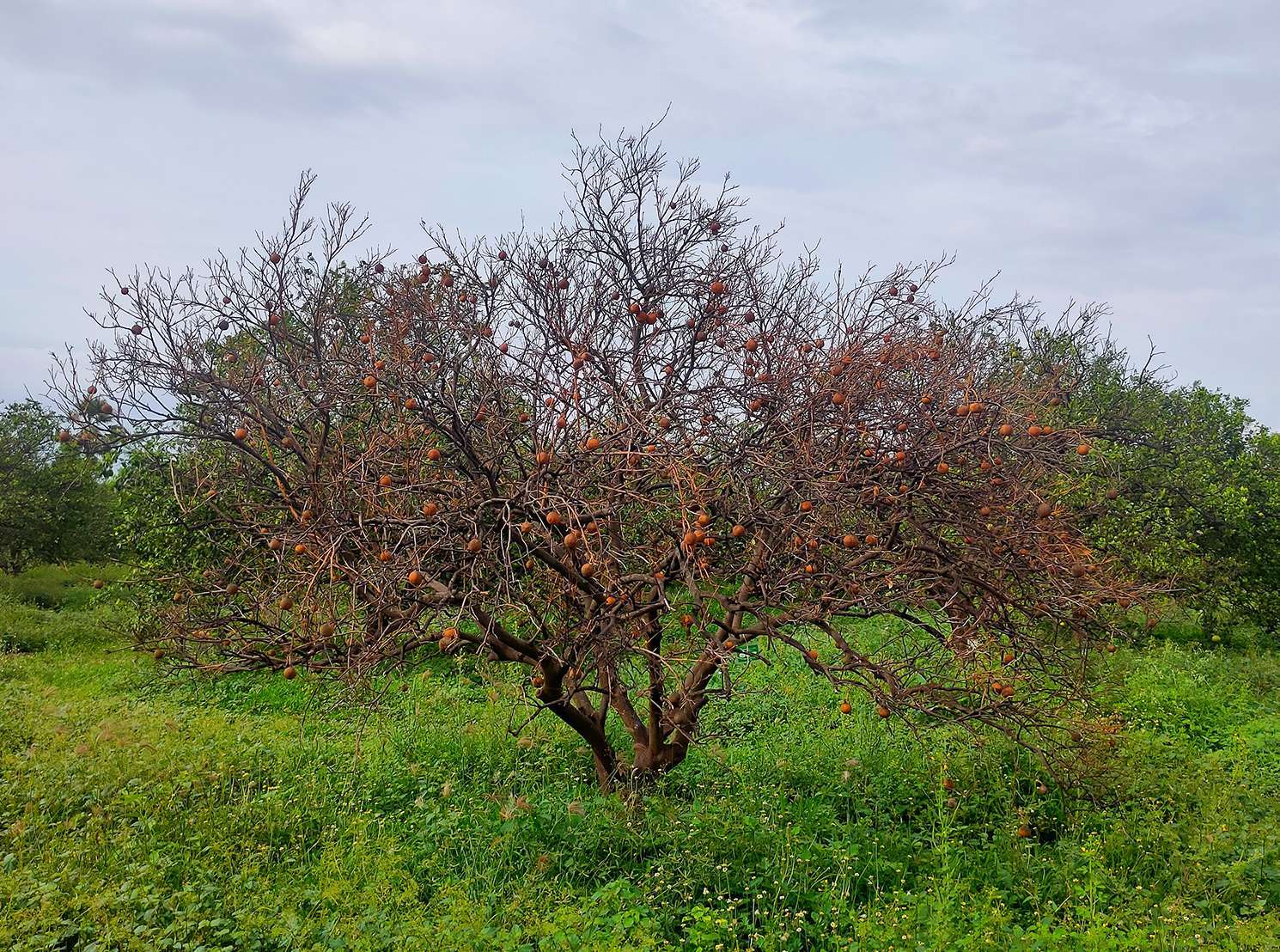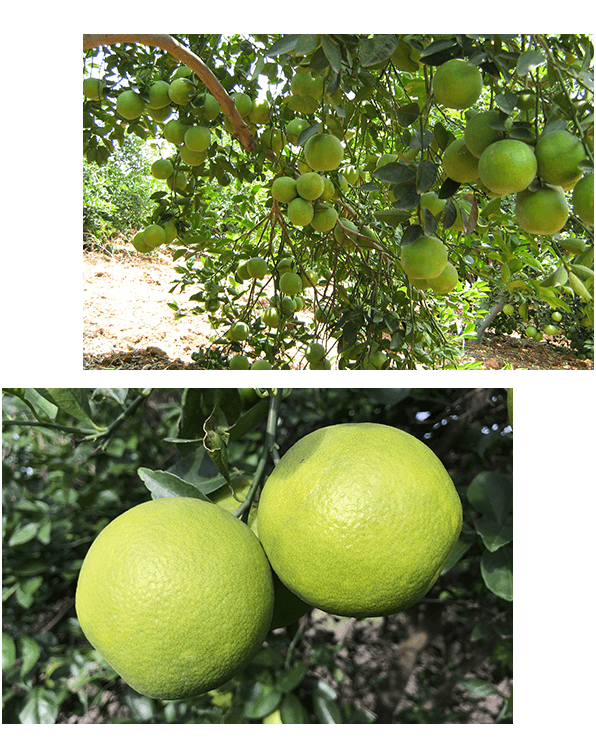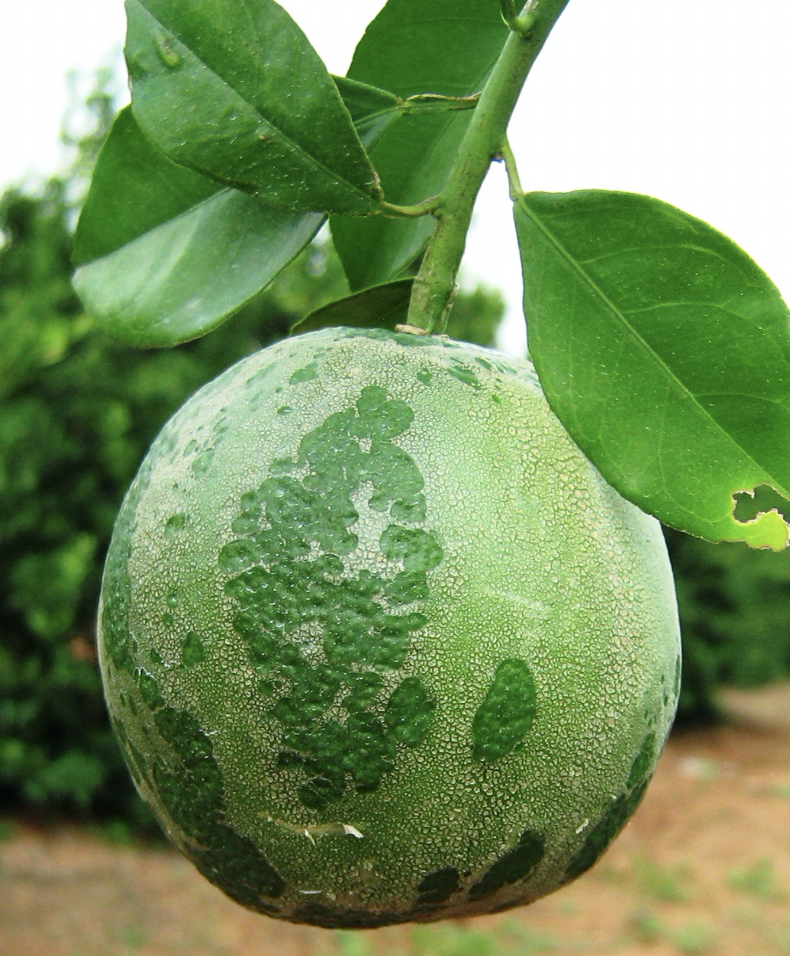Samhitha Value to Farmer
No point in growing Citrus Orchard that declines in less than 10 years after planting
Sweet Orange trees start bearing from 4th year onwards after planting. The Orchard actually breaks even after 7 years because the farmer has to recover the capital along with 7 years of recurring expenditure (Initial Capital + 4 years non-bearing period + 3 years recurring expenditure). Whereas the Sweet Orange tree reaches its optimal size and bearing capacity around 10 years after planting.

During the past couple of decades citrus decline is setting in as early as 8th year after planting and orchards are being removed by 12th year after planting. Its been happening not only in problematic soils with poor management, but also in good soils with better management even after getting excellent yields initially.

Fruit size and quality are prime factors of success and profit
Market prices are governed by size and quality of the fruit and hence farmers always direct their efforts in getting bigger fruits with smooth finishing. Generally, chemical fertilizers are being extensively used in this pursuit. Farmers often become successful in getting the desired results but with negative consequences in the later years.
Size and quality of the fruit primarily depends on health and vigour of the citrus tree which in turn depends on intelligent irrigation water management, soil fertility management, plant nutrition management and timely pest management. This requires a strategic and integrated approach which is sustainable in the long run.
Two critical problems which can't be corrected if not detected at the right stage

Streaks on citrus fruits reduces the market value to great extent. These streaks are caused by a minute insect pest called ‘thrips’ when fruit is just in it’s formative stage which is almost four and half months before the fruit is being harvested. Scouting for thrips during that stage and timely preventive/curative measures adopted can save fruits from poor market value. Dark brown patches on the fruits reduces the marketability that fetches the lowest possible price. These dark brown patches are caused by another minute pest called ‘red spider mite’ during development stages of the fruit. These patches can’t be reversed once formed and hence shall be prevented by regular scouting and timely preventive sprays.

We can see the hidden and invisible better
Samhitha collects and analyses data gathered through various devices deployed ‘on the ground’, ‘below the ground’ and ‘above the ground’. Data will be collected for parameters like soil moisture, soil temperature, soil pH, soil EC, Rainfall, Relative Humidity, Air temperature, Wind direction and velocity, leaf wetness, NDVI, irrigation water quality (TDS, pH, EC) etc.
There will be seamless flow of data from soil, plant and weather sensors. Aerial Robots (Drones) will be employed to scan the plants from the sky. The stress in the plants can be detected as early as it sets in with the help of customized algorithms used for data analysis. Naviz Analytics, the parent company of Samhitha is very good at it.
Samhitha gives local farmer global presence
Samhitha Crop Care Clinics builds comprehensive profiles of farms and farmers online. Small and marginal farmers are also empowered to improve their standards that can match the global requirements. Good Agriculture Practices are systematically documented and computerized with absolute traceability


